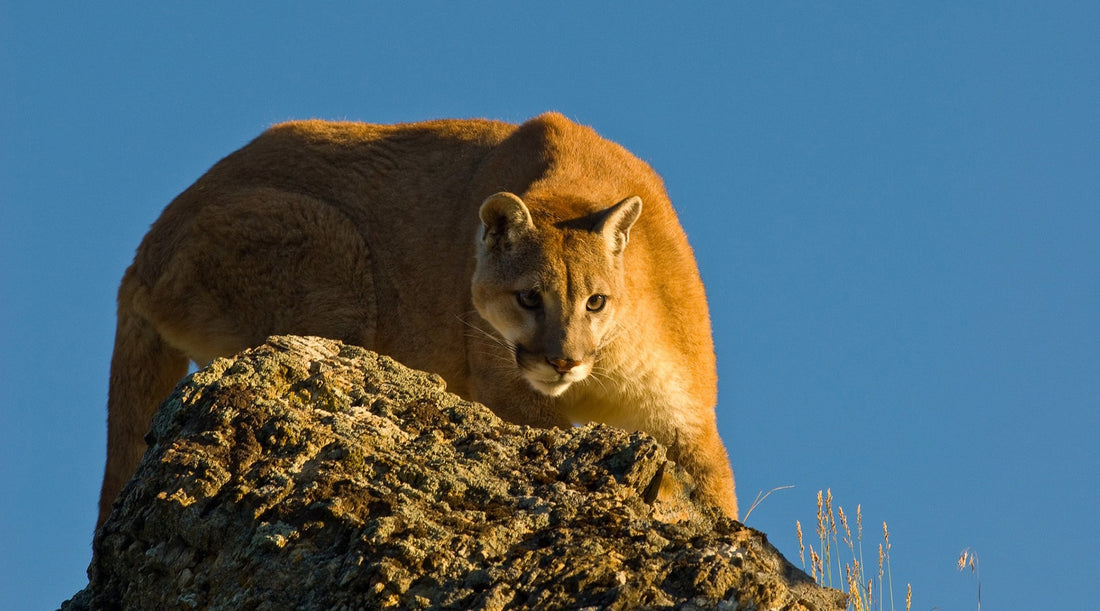Hiking or backpacking in the wilderness can get scary real quick when you encounter wildlife, especially when it's a mountain lion. While such encounters are rare, knowing how to react is crucial for the safety of both yourself and these elusive animals.
Here are a few essential tips on how hikers and backpackers can survive a mountain lion encounter on trail.
Understanding Mountain Lion Behavior:
Mountain lions, also known as cougars or pumas, are solitary and elusive predators. While they generally avoid human contact, certain situations may trigger a mountain lion encounter:
- Protecting Cubs: Female mountain lions may become defensive if they perceive a threat to their cubs, especially during spring and summer.
- Hunger or Provocation: Starving or provoked mountain lions may behave aggressively. Maintaining a respectful distance is crucial to avoid triggering defensive reactions.
Tips for Surviving a Mountain Lion Encounter:
-
Stay Calm:
- Remain Composed: If you encounter a mountain lion, stay calm. Avoid panicking, as sudden movements or loud noises may escalate the situation.
-
Appear Larger:
- Open Your Jacket or Raise Your Arms: Make yourself appear larger by opening your jacket or raising your arms. This can deter a mountain lion from approaching.
-
Maintain Eye Contact:
- Avoid Direct Eye Contact: While eye contact is generally recommended for other wildlife encounters, with mountain lions, it's best to avoid direct eye contact. Cougars may interpret it as a challenge.
-
Back Away Slowly:
- Create Distance: Back away slowly without turning your back to the mountain lion. This allows you to maintain visual contact while gradually increasing the separation between you and the animal.
-
Speak Calmly:
- Talk in a Calm and Firm Voice: Speak to the mountain lion in a calm, firm voice. This helps convey that you are human and not a threat.
-
Do Not Run:
- Avoid Running: Running may trigger a mountain lion's chase instinct, as they are natural predators. Stand your ground and resist the urge to flee.
-
Use Noisemakers:
- Create Loud Noises: If the mountain lion does not retreat, use noisemakers such as whistles, air horns, or items from your backpack to create loud and intimidating sounds.
-
Protect Your Neck:
- If Attacked, Defend Your Neck: In the rare event of a mountain lion attack, protect your neck and head. Use any available tools, such as trekking poles or rocks, to fend off the animal.

Preventive Measures:
-
Hike in Groups:
- Safety in Numbers: Hiking or backpacking in groups reduces the likelihood of surprising a mountain lion. Cougars are more likely to avoid larger groups.
-
Make Noise:
- Announce Your Presence: Make noise periodically, especially in areas with dense vegetation, to alert mountain lions to your presence. This gives them an opportunity to avoid you.
-
Keep Pets Leashed:
- Control Pets: Keep pets on leashes, as unleashed pets may attract or provoke mountain lions.
After the Encounter:
-
Report the Incident:
- Inform Local Authorities: Report any mountain lion encounter to local wildlife authorities. This information assists in monitoring and understanding wildlife behavior.
-
Seek Medical Attention:
- If Injured, Seek Medical Help: In the rare event of an attack resulting in injury, seek medical attention immediately. Mountain lions' bites can cause significant damage, and prompt medical care is essential.
Conclusion:
Encounters with mountain lions are infrequent, but being prepared and knowing how to react can make a significant difference in ensuring a safe outcome. By staying calm, using appropriate responses, and taking preventive measures, hikers and backpackers can navigate these encounters safely.
In the end, always prioritize your own safety and give nature the respect it demands.

